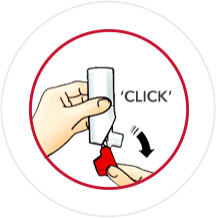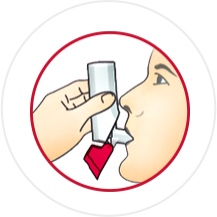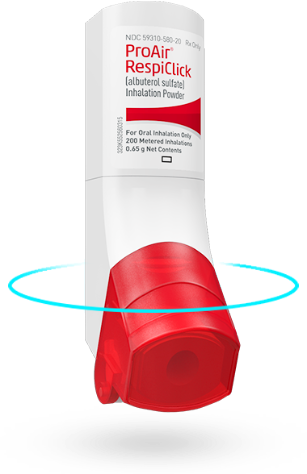Key characteristics
of rescue inhalers
3 basic steps to use ProAir RespiClick®1
Please see the full Patient Instructions for Use found in the full Prescribing Information.
open


Make sure the cap is closed before each dose.
Hold the inhaler upright as you open the cap fully.
Open the cap all the way back until you hear a “click.”
Your ProAir RespiClick ® inhaler is now ready to use.
Do not open the cap unless you are taking a dose.
inhale

Breathe out through your mouth and push as much air from your lungs as you can.
Be careful not to breathe out into the inhaler mouthpiece.
Put the mouthpiece in your mouth and close your lips around it. Breathe in deeply through your mouth, until your lungs feel completely full of air.
Breathing in deeply through the mouthpiece will deliver the medication to your lungs.
Do not let your lips or fingers block the vent above the mouthpiece.
Hold your breath for about 10 seconds or as long as you comfortably can.
Remove the inhaler from your mouth.
Check the dose counter on the back of the inhaler to make sure you received the dose.
close


Always close the cap after each inhalation so your inhaler will be ready for your next dose.
If you need another dose close the cap and repeat all of the steps.

ProAir RespiClick® contains a powder and must be kept clean and dry at all times.

Replace your inhaler if washed or placed in water



